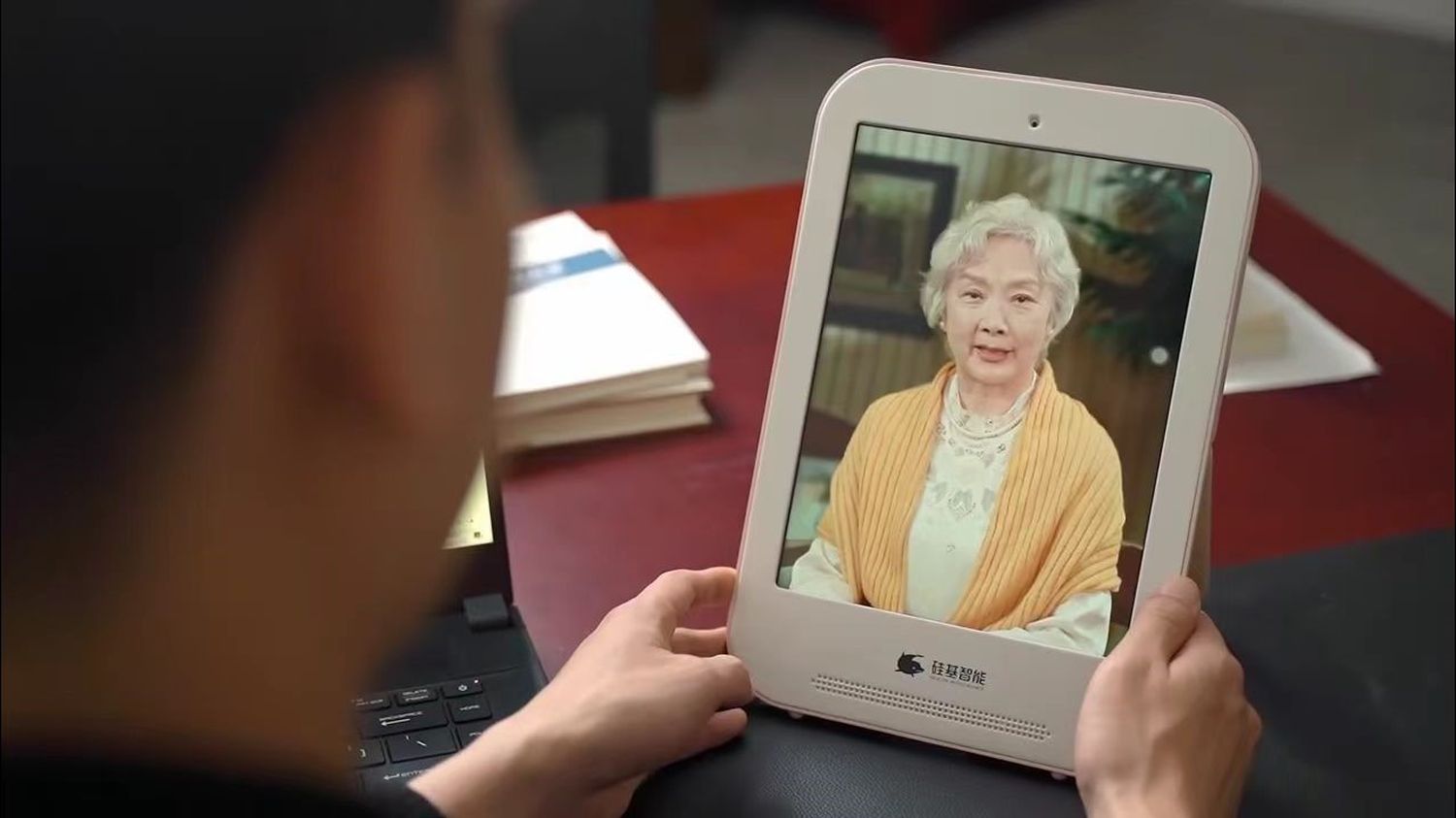The development of new technologies is revolutionizing the funeral sector in the country. The Chinese are discovering completely new services made possible by artificial intelligence, including the possibility of communicating with the dead.
Published
Reading time: 4 min

At first it is a banal discussion: we hear the grandmother asking the young man if he has eaten well. “How are you, grandma?” the grandson replies. It’s been a long time since I saw you…“A classic discussion between members of a Chinese family. Except that the grandmother who is speaking has died several months ago. Her avatar was recreated using artificial intelligence. Via a screen , the family can continue to communicate with her every day.
Death challenged by new technologies, a new concept in China which pushes the limits of morality and is preparing to revolutionize the funeral sector. It was a young engineer from Nanjing, 300 kilometers west of Shanghai, who was one of the pioneers. Sun Kai developed this new way of interacting with the dead after the death of his mother. And according to him, it did him a lot of good: “I was excited and relieved. I felt guilty for not spending enough time with my mother before she passed and for spending too much time on my work. When I heard his first words, I felt like I felt less guilty, like I had found a way to talk to my mother and hear her ask me, for example, if I ate well Today.”
“I hope that soon she will be able to communicate not only with me, but also with my children…”
At the Nanjing Silicon Intelligence company headquarters in Nanjing, several hundred programmers work daily to develop the digital profiles of deceased people. “Our technology is already very advanced and works very well, assures Yang Yang, one of the site managers. To copy physical appearance, we only need a three-minute video of the person speaking while making natural and habitual gestures. For the sound, we need around ten minutes of audio recording. All this only takes a few days. For thought cloning, it is a process that is more progressive: the more material we have, the more resemblance there is to the deceased person. As we accelerate the development of our technology, the dialogue becomes more and more sophisticated“, specifies the specialist.

The price for creating a digital profile starts at 2,000 euros, but can go much higher if the family wishes, for example, to be able to dialogue as with a living person on any subject.
Involve the deceased… in their own funerals
Artificial intelligence also gives other ideas: in one of the largest cemeteries in the western suburbs of Shanghai, new technologies are shaking up daily life. At the bottom of the cemetery, you can discover a digital space with screens, and a completely crazy project to involve the deceased… in their own funerals. The deceased person will be able to direct their funeral and communicate directly with the audience.
“Every ordinary person deserves to be preserved in this world after deathexplains Li Jingheng is one of the leaders of the cemetery. We rely on new technologies to ensure the continuation of the life of the deceased. Our first try was with a famous professor of medicine in Shanghai. It was a first in China: during the funeral ceremony, he was able to talk with his students and nurses. It was very moving, his voice came out, his students immediately burst into tears. The doctor asked one of his students where he was in his studies… Thanks to ChatGPT techniques, he was perfectly capable of conversing“, he says.
However, LThe concept is still in its infancy and not everything is perfect, admits Yang Mujiang, who supervises the digital part of the cemetery. “As some deceased people are very elderly, there may not be many high-quality photos and videos. With artificial intelligence, we can create a profile, but only the eyes, mouth and head can move a little. It is better to have more videos so that the effect is better during the burial. We must be able to reproduce the habits of the deceased.”
“If the profile is not real enough, the family will feel uncomfortable. Relatives only validate the project if they cannot tell the difference between the real profile and the fake one”
Yang Mujiangat franceinfo
A novelty that attracts families of the deceased, but not necessarily everyone. This Shanghainese we met in the cemetery, who came for the first anniversary of his mother’s death, doesn’t find all this very moral. “It is really necessary that the profile created by the‘artificial intelligence reproduces the same habits of the deceased person for it to be correct, but I find that it‘is difficult d‘to be D‘agreement with all that, because we knows that the deceased person will not return. VS‘East a little strange that the family can have a dialogue with a relative deceased. If someone‘one of the family dies, I think it‘is better to‘talk about it face to face between us at home”he sweeps away.
Still, the market is potentially gigantic in a country which records an average of 10 million deaths each year.
